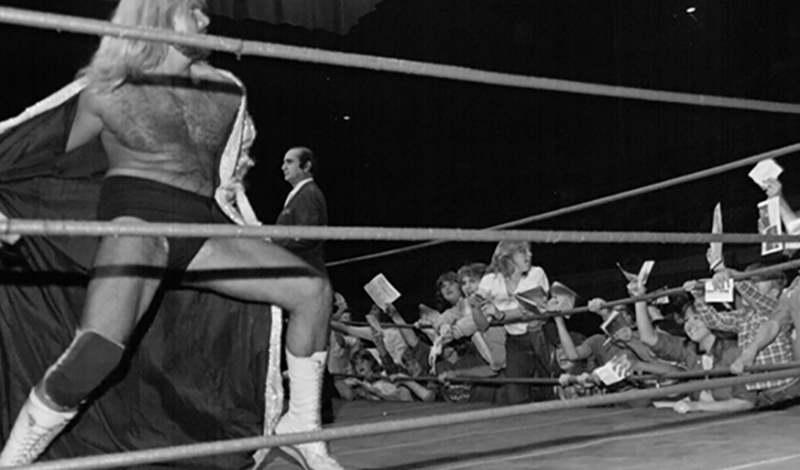Ringside: Memories Of World Class Championship Wrestling
By day they are factory workers, retail clerks, stay-at-home mothers, and students. But once a week, enveloped in a funk of cigarettes, spilled beer, and french fries, they become a crush of thousands screaming for blood and cheering for Texas and the American Way. It’s Monday night in Fort Worth and this is World Class Championship Wrestling.
UT Arlington Libraries Special Collections spotlighted the WCCW in the exhibit, "Ringside: Memories of World Class Championship Wrestling," It featured 34 photos taken by Cirrus Bonneau, who spent Monday nights in 1982 and 1983 at the Will Rogers Coliseum in Fort Worth capturing the interplay between the costumed stars and their enthralled audience.
Bonneau attended his first match while working on a photo project documenting Fort Worth’s history. Though not a wrestling fan himself, he saw photographic possibilities in the event. “I went there with the idea that it was all fake,” Bonneau said by email. “After a few visits I realized I had the wrong perspective. It is not fake at all, but theater.”
Matches featured clearly defined characters representing good and evil. On the good side were the Von Erichs: patriarch Fritz and his sons Kevin, David, Kerry, Mike, and Chris. While Fritz had gained fame playing a villain in the ring, he groomed his sons to be Texas heroes draped in the Lone Star flag. It was a savvy business move as Texas patriotism was riding a wave after the hit movie Urban Cowboy and the success of the television show Dallas.
“I loved wrestling in the Metroplex and representing Texas,” wrote Kevin Von Erich to exhibit curator Oliver Bateman. “As I travelled the world during my career, I discovered that some people in other countries hated America, but they all loved Texas.”
A crucial distinction between a play and pro wrestling is the level of audience participation. “There is an interaction between the two groups, the wrestlers and the crowd, and they play off of each other,” Bonneau said. “There have been instances where it was close to physical contact.”
It was Bonneau’s emphasis on the relationship between the wrestler and his audience that caught the eye of Bateman, an assistant professor in the UTA History Department.
“Most photos of professional wrestling were close-ups on the face and the blood,” Bateman said. “Cirrus used a wide-angle lens to capture what everyone else was doing.”
Bonneau’s photos also capture Dallas’ character during a time when pro wrestling was divided among regional territories across the country. “The regional flavor is gone now,” Bateman said, “but it meant something to thousands of people. It wasn’t fake to them.”
CuratorOliver Bateman
Central Library, Special Collections
Date -
